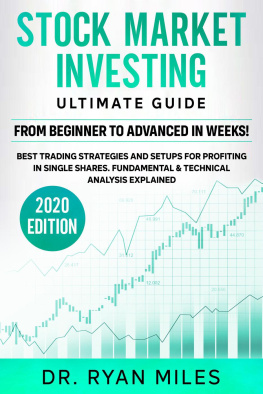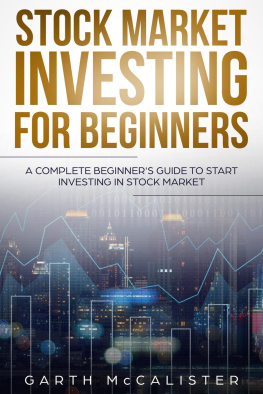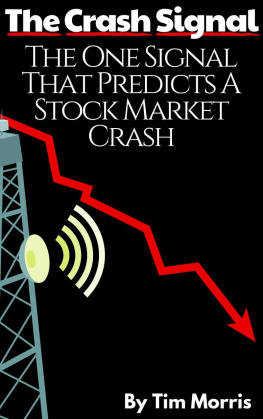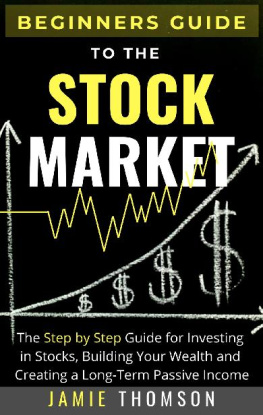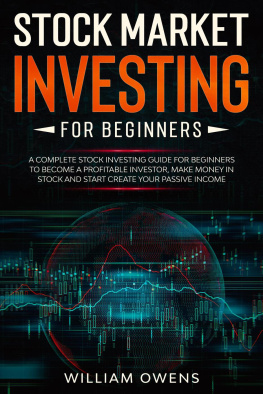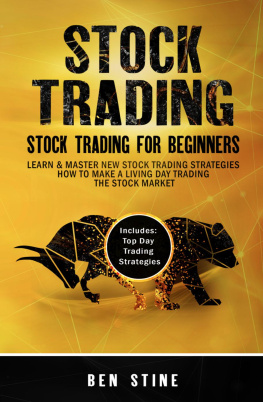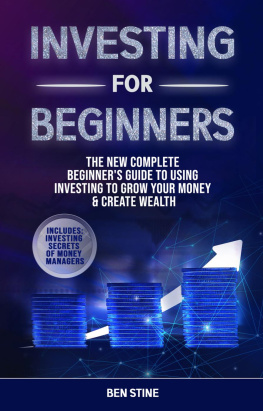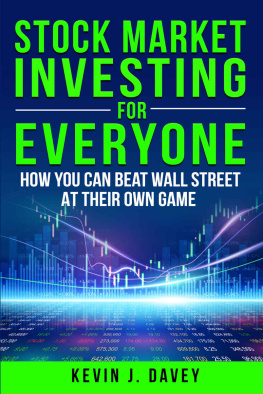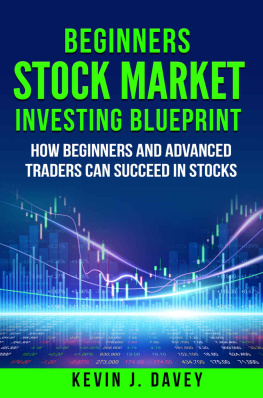This is a different kind of stockmarket beginners guide. The purpose of this book is not to study the history ofWall Street and waste time on facts that very few care about. This book focuseson the ten key principles that you can do right now to start buildingand fortifying your own investing accounts, regardless of where you are on yourown financial journey. I didnt write this book based on theories or opinions,rather I am sharing my personal experiences and the strategies I used to build myown accounts.
If you combine discipline andeffort with the right strategies over time, magic can happen. Its no smallfeat to open an account and take it to six figures in a few years, and itrequires dedication, self-awareness, and an understanding of the system. Thisbook is not about the details of the stock market as much as its about you, andthe habits that you can develop to be a successful investor and make money.
I am an avid nonfiction reader. Ilove to read books that not only share knowledge, but can also empower me tochange my behaviors and my life. In this book I hope to share some things thatyou can start doing right now that you may not being doing, or may be unsureabout. I it will give you more confidence in your future and you will be ableto grow your capital beyond your wildest expectations.
Introduction
"Successful Investingtakes time, discipline and patience. No matter how great the talent or effort,some things just take time: You can't produce a baby in one month by gettingnine women pregnant."
Warren Buffett
Here is a quick lesson on thestock market for those readers looking for the basics before we dive into theaction steps.
The stock market has a very lowbarrier of entry. Almost anyone can own a publicly traded companys stock andpotentially grow their own investment account. Actively trading and investingin a successful companys stocks helps to diversify your ability to createincome instead of selling your time for money at a job.
Companies raise money when they gopublic by selling their stock on the stock market through an Initial PublicOffering. If a company has an IPO for 1 million shares offered at $20 a share,then they will take in $20 million if the market buys all their stock at theoffering price. Once a company takes in the money from their initial share ofstock through the IPO, their shares trade on the open market and the price isdetermined by what investors and traders are willing to pay for the stock atany given time. The value of a company is set by the price of the stockmultiplied by the number of shares of the stock that were issued. If a companyhas 1 million shares of stock and the price of the stock is $100 per share, thecompany market capitalization is $100 million, meaning the company is worth$100 million.
The company doesnt determine thevalue of its stock, the market does. The price of a stock is set by the lasttraded share price, because the stock market is essentially an auction wherethere is a bid and an ask price at any given time. The bid is whatsomeone is willing to buy the stock for, and the ask is what someone is willingto sell the stock at. When the stock is physically traded, that becomes thestock price.
The company is separated from thebuying and selling of its own stock unless it issues a stock buyback program. Duringa buyback, a company will go on the open market and buy its own shares andlower the share float available for trading and investing. Share float is theactual number of stocks available for trading at any one time.
A company can also issue dividendpayments to reward investors with a share of company earnings. Dividends areusually paid four times a year (quarterly) on stocks. A dividend stocks yieldis determined by the amount of their annual dividend payments divided by theircurrent stock price. If a company pays four annual dividends a year at $1 eachfor $4 in total annual dividends, and the stock price is $100, then the stocksyield is 4%.
Additionally, the company couldalso have a secondary offering of stock to raise additional capital, but thisbrings more supply into the market and dilutes the existing shares. A secondaryoffering is looked at negatively because it shows the company needs to raisemore capital because it doesnt have adequate cash flow inside the business tooperate.
As mentioned above, the companycan also buy back its existing shares and lower the amount of shares availablein the market. A buyback program provides support for a stock price and takessupply of shares out of the market, helping to increase the demand for thestock. Stock buybacks are looked at as a positive sign, because it shows the investorsthat the company believes that its best use of extra capital is to buy back itsown stock.
This is the basics of howcompanies are related to their stocks. The company and the stock itself are twodifferent things. The stock market can be both a wealth building and wealthdestroying machine. It goes through cycles of long term uptrends (Secular BullMarkets) and long term downtrends (Secular Bear Markets) that can last foryears.
The stock market can also experienceshort term bubbles like the dot com era of the late nineties into March of 2000,when earnings and sales expectations for the next decade were already pricedinto stocks and reality hit investors hard. Likewise, it can have short termcorrections with prices dropping 10%, short term bear markets when prices drop20%, and even crashes when the market as a whole can plunge 50%, like late 2008and early 2009.
The stock market is not the HolyGrail of riches where all you do is buy stocks and win. The stock market is agame of survivorship. Some post IPO stocks go on to rise by 1,000% over thenext decade and eventually end up in the Dow Jones Industrial Average asleaders of an industry. Others stock values may lose half their value in sixmonths, eventually being delisted as the underlying company goes bankrupt.
The stock market is a reflectionof free market capitalism with both winners and losers. The leaders in the U.S.stock market have reflected advances in technology, and the stock market is themechanism for participating in the growth of the modern economy.
Your ability to use the stockmarket as a wealth building tool will be based on how well you can consistentlydo things that expose your money to good opportunities and uptrends in thestock market as a whole, and in individual stocks that are going up in price astheir sales and earnings rise. When you have captured some nice trends, yournext job is to know when to exit with profits and not allow them to be takenback during the next bear market, or when the company makes a misstep and losesits competitive advantage.



